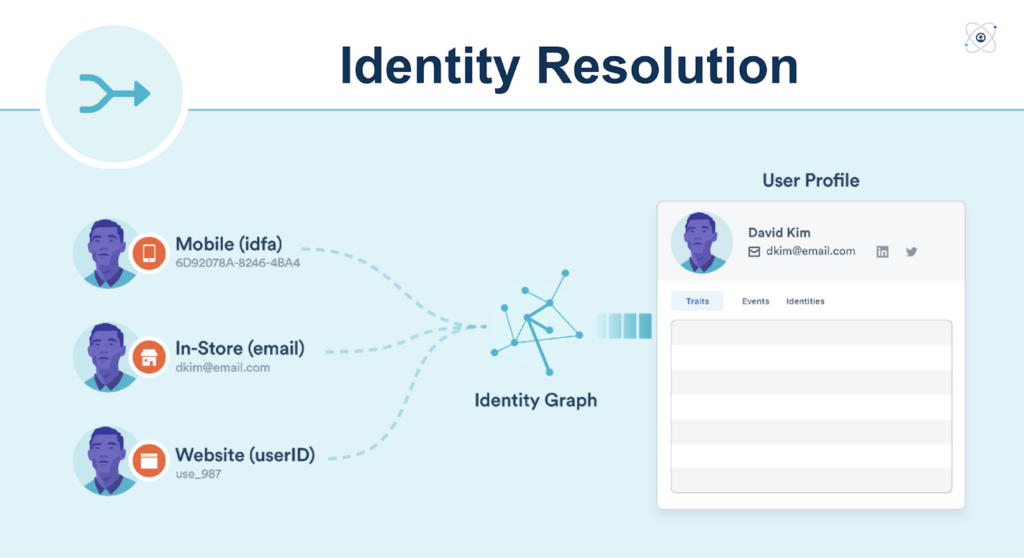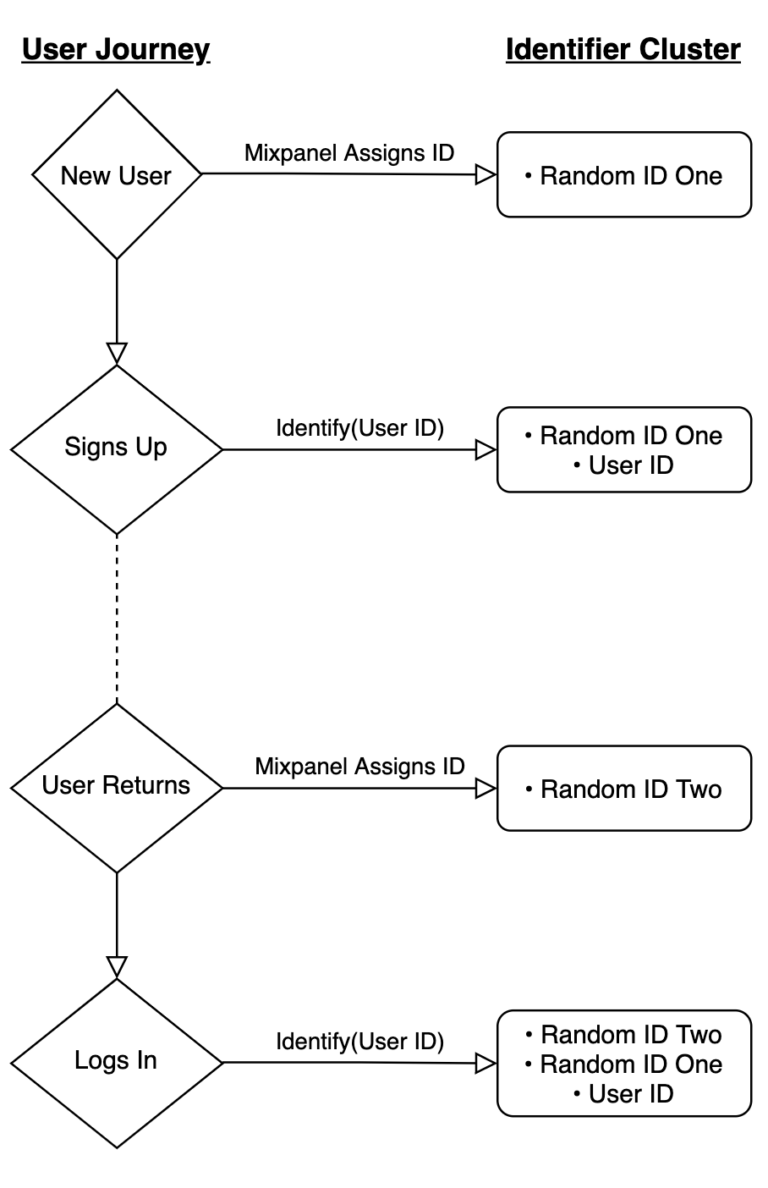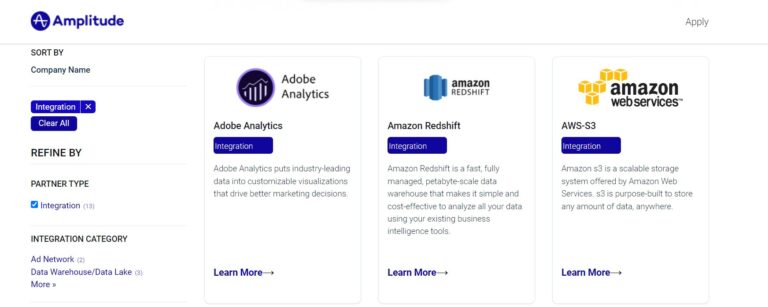
How do you identify a user that interacts with your website multiple times? Prior to identification under a single multi-touch profile, the user will generate an “anonymousID” and a “deviceID”, and things get complicated when an iosID and androidID also enters the picture.
As a marketer, your goal here is to resolve these user identities and turn them into a single profile to get a 360 degree view of your customer. Failure to do this inevitably dirties up your data and leaves you with an incomplete picture of your campaign performance, website traffic, product usage, and customer journey. You will not know whether the different touchpoints and interactions truly came from the same person.
The solution lies in identity resolution in event-based analytics tools such as Mixpanel or Amplitude. Both tools are frequently used for their unified user profiles and customer journeys. Both are used for attribution and conversion reports for user cohorts as well as for the individual user.

If you’re wondering which one of the tools you should opt for, or if you’re already using them and want to get the most out of your tool’s identity resolution capabilities, let us walk you through how merging user ID’s works.
Amplitude and Mixpanel are similar tools overall and they’re also similar in how they merge user IDs. But we have found that Amplitude is better at merging IDs retroactively, and recommend that tool to our clients.
The Main Differences in Identity Resolution
Let’s use Mixpanel’s ID merge documentation to explain a concept behind how user identity is resolved.
Please notice in the diagram below that IDs are generated multiple times for every user. One user doesn’t equal one ID, it equals multiple IDs organized in an identifier cluster. This is done because your analytics tool sees individual IDs and touchpoints at first, and doesn’t know right away if they came from the same user. But the web of data about interactions enables your tool to stitch together a story, and determine which interactions belong to the same user.

After the different identifiers are collected, your analytics tool will run an algorithm to decide whether a merge can be completed. The logic can look like the one in the following diagram:

The diagrams above are proprietary to Mixpanel. Amplitude uses their own algorithms. And this is where the tools differ. Moreover, the back-end differences result in differences on the front end, too.
For a deep dive about the differences, read our article dedicated to ID Merge in Mixpanel vs. Amplitude here.
Super Properties and Set Once Attributes in Mixpanel and Amplitude
Mixpanel
Mixpanel has super properties stored in either the local storage in the browser or in a cookie in the browser. This sets and connects properties about an identified user, and applies the properties to every Mixpanel event going forward.
Since we first published this article, we were notified in the comments on this article that Mixpanel has improved their set_once attribute. We see this as a part of the two tools watching each other closely, and keeping up with each other’s useful features. For an elaboration on setOnce, let us give examples from Amplitude.
Amplitude
Instead of relying on getting information client-side, Amplitude has a set once attribute. Once you make a call to Amplitude, you can send user properties with a setOnce attribute. These properties don’t change in the Amplitude user profile, and give you more control over first-touch attribution.
When the user comes from a new device, the ID of that device will be added to their existing user profile. Also, when a user turns from anonymous to known thanks to a step such as giving you their email address, their previously anonymous interactions are added to their user profile as well.

The Winner: Amplitude
User profiles in Amplitude are stronger in merging IDs and data across the customer’s journey.
With identity resolution in either Mixpanel or Amplitude, you’ll have access to context data about the user, such as what was the source and landing page of their first visit. But we find identity resolution in Amplitude to be superior because the tool is better at merging IDs retroactively. It’s important to us that Amplitude helps you smoothly merge the user journey data from before and after the user gives you their email address.
To be fair, based on what we know Mixpanel has been planning to ship, it sounds like the two tools may soon be equal on how well they do identity resolution. But as of October 2022, the month we updated this section, we’re still picking Amplitude as the winner.
Integrations & Data Imports in Amplitude and Mixpanel
Remember that you don’t need to be limited to the data that your analytics tool is able to track. You can also pour in data from other sources. One great example is Amplitude’s integration with AppsFlyer, which lets you create rich reports about attribution and the customer’s journey from marketing acquisition to product usage.
Other popular integrations for enriching the customer journey data are those with tools and platforms for CRM, customer engagment, email, advertising, and now also consent management. Both Mixpanel and Amplitude offer a wealth of these integrations, with Amplitude’s listed in this resource about data import solutions, or this one about integrations. You’ll notice that analytics tools can even integrate with other analytics tools, and we can testify to how it is common for Amplitude or Mixpanel to be used in conjuction with Adobe or Google Analytics.

For even more about the customer’s journey, you can also import historical or offline data. We recommend plugging your analytis tool into Segment and importing via the analytics data importer that we’ve built for public use.
The Winner: Both Amplitude and Mixpanel
This is a tie. Let’s reiterate that both Amplitue and Mixpanel are great at integrating and importing customer journey data and enriching user profiles thanks to the rest of your stack.
Mixpanel and Amplitude Identity Resolution: Why Is It Important?
With properly merged user IDs, you will improve how you allocate marketing spend and grow your ROI. More specifically, you will improve in:
- Customer understanding: Fragmented identities can prevent you from getting the complete picture of your customer’s journey.
- Personalization: Identity resolution will create personalization opportunities that will make your messaging relevant and effective. Insights from McKinsey reveal personalization can reduce acquisition costs by as much as 50%, increase revenues by 5 to 15%, and increase the efficiency of marketing spend by 10 to 30%.
- De-duplication: Two or more user profiles for the same person inflate some metrics and deflate others. Merging IDs will let you generate insights that are more reliable and lead to better decisions.
Amplitude or Mixpanel: Which Tool to Choose?
An effective product analytics tool will help you understand your customer journey. So ID merge is a big factor in your decision about which analytics tool to choose. Another decision-making factor is how well the tool is able to integrate or import user journey data from other tools and sources.
You will not go wrong with either Mixpanel or Amplitude. But for our clients, we’ve been recommending Amplitude because we find it noticeably better at resolving user identities across devices and touchpoints.
You might say that’s because Amplitude is our technology partner. But so is Mixpanel, Heap, or Kissmetrics.

Hey Scott,
Great article. Mixpanel also has a set once attribute too though https://developer.mixpanel.com/docs/javascript-full-api-reference#mixpanelpeopleset_once
“But we find identity resolution in Amplitude to be superior because the tool is better at merging IDs retroactively”
Where is this described in the post? Mixpanel does the merging retroactively too, as shown in the above diagrams.